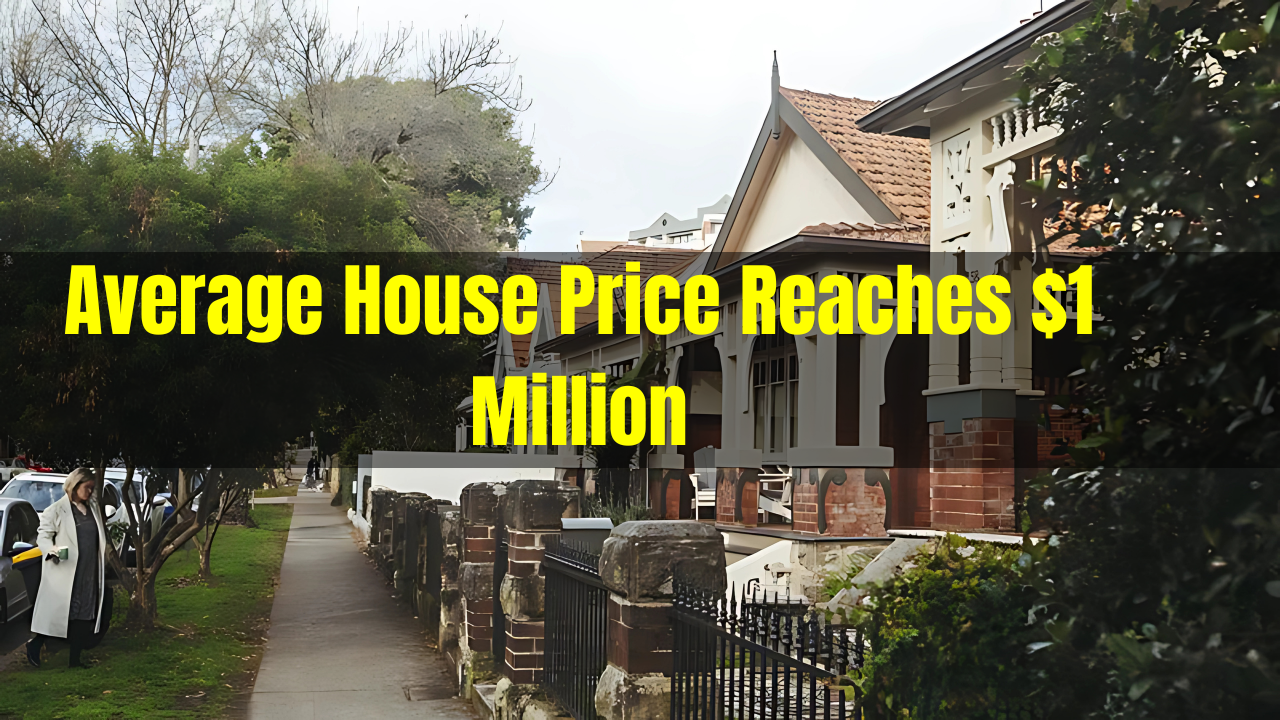Australia’s residential property market has reached a historic milestone, with the national average price of a home surpassing $1 million for the first time in the March quarter of 2025. According to the Australian Bureau of Statistics (ABS), the mean dwelling price rose to $1,002,500, marking a 0.7% increase from the previous quarter and reflecting ongoing pressures in the nation’s housing market. First-Time Buyers Alert: Average House Price Climbs to $1 Million Nationwide.
Key Drivers Behind the Rise
State-by-State Growth
The rise in national dwelling prices was not uniform across the country. Western Australia, South Australia, and Queensland were the main contributors to this surge, with Queensland notably overtaking the Australian Capital Territory (ACT) to become the state with the second-highest average dwelling price in Australia, behind only New South Wales (NSW).
-
New South Wales: Remains the most expensive market, with an average dwelling price of $1,245,900.
-
Queensland: Jumped to $944,700, overtaking the ACT.
-
Australian Capital Territory: Dropped to $941,300.
-
Western Australia: Saw strong growth, reaching $874,200.
-
Northern Territory: Remains the most affordable, with a mean price of $517,7006.
Total Value and Number of Dwellings
The total value of Australia’s residential dwellings increased by $130.7 billion to $11.4 trillion in the March quarter, while the number of dwellings rose by 53,400 to 11,338,500 This growth was evident across all states and territories, but most pronounced in Queensland (+1.9%) and South Australia (+1.6%).
Market Trends and Affordability Challenges
Slowing Annual Growth
Despite the quarterly rise, the annual growth rate in dwelling values has slowed. The year-on-year increase for the March quarter was 5.9%, down from 9.5% in the same period in 2024. This suggests that while prices continue to rise, the pace of growth is moderating.
Affordability Crisis
Australia’s housing market is now among the least affordable globally, with many residents struggling to buy or rent homes. Experts attribute this crisis to a combination of factors, including a shortage of available homes, a rising population, tax incentives for property investors, and insufficient investment in social housing.
Michael Fotheringham, director of the Australian Housing and Urban Research Institute, described the $1 million milestone as “daunting” and “compelling,” noting that home prices have consistently outpaced wage growth, putting significant strain on both low- and middle-income families2.
Rental Market Pressures
The rental market is also under pressure, with demand far outstripping supply and social housing unable to keep up with needs. This has led to increased competition for rental properties and rising rents, further exacerbating affordability issues.
Economic and Policy Context
Interest Rate Cuts
The Reserve Bank of Australia (RBA) cut interest rates in early 2025, reducing the cash rate to below 4% for the first time in two years. While lower rates typically stimulate demand, the effect on affordability has been limited by continued price growth and tight supply.
Government Response
The ongoing affordability crisis has prompted calls for greater investment in social and affordable housing, as well as reforms to tax policies that favor investors over owner-occupiers. However, progress has been slow, and the market continues to be dominated by upward price pressures.
Regional Variations
Queensland and South Australia Lead Growth
Queensland and South Australia experienced the strongest quarterly growth, with prices rising by 1.9% and 1.6% respectively. This reflects strong demand and limited supply in these regions, as well as migration trends and investor interest.
Victoria’s Market Softens
In contrast, Victoria saw a slight decline in average dwelling prices over the past year, dropping from $911,800 in March 2024 to $899,700 in March 2025. The ACT also experienced a dip, highlighting regional differences in market dynamics.
Northern Territory: The Most Affordable Market
The Northern Territory remains the most affordable place to buy a home in Australia, with an average price of $517,700. However, even here, prices are rising, albeit at a slower pace than in other states.
Continued Pressure on Prices
Experts predict that upward pressure on home prices will persist, driven by population growth, limited new supply, and ongoing investor activity. While the rate of growth may slow, affordability is unlikely to improve significantly in the near term.
Policy and Social Implications
The $1 million milestone underscores the urgent need for policy interventions to address housing affordability. Without substantial reforms, many Australians will continue to face significant barriers to home ownership and stable rental accommodation.
FAQs
Q: What is the current average price of a home in Australia?
A: The national mean price of a residential dwelling is now $1,002,500.
Q: Which states have the highest and lowest average home prices?
A: New South Wales has the highest average price ($1,245,900), while the Northern Territory is the most affordable ($517,700).
Q: Why are home prices continuing to rise?
A: Key factors include a shortage of available homes, rising population, tax benefits for investors, and insufficient investment in social housing.

